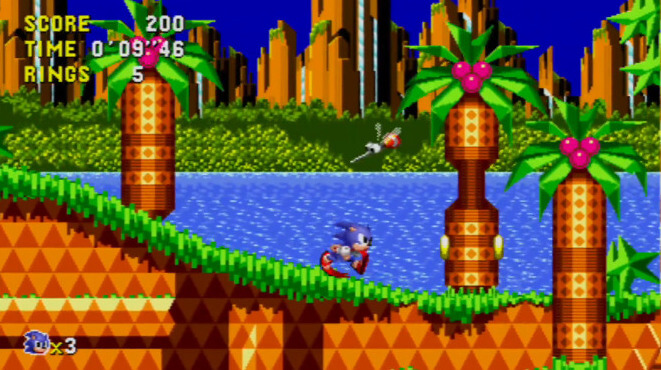

This is where things get interesting - rather than simply running straight to the end of a stage (which is still possible, of course) reaching the true ending requires a series of steps. Sonic's end goal is to make a good future by travelling back to the past and destroying Eggman's future-polluting machines in each act. That's right, each of the game's seven zones features multiple time periods - the past, the present and both a good and bad future. Our brand new DF Retro episode gives you a complete guide to Sonic CD, the technology that powers it, and a quality assessment of every port. Sonic CD takes a different path, doubling down instead on platforming and exploration - and time travel. With Sonic 2, Yuji Naka and his team leaned into the speed aspect of Sonic with faster, more focused levels: finish each stage, conquer Eggman and win the game. While the original Sonic was sold on its high-speed gameplay, it was also packed with challenging platform sequences. In many ways, Sonic CD is to Sonic as Zelda 2 and the American version of Super Mario Brothers 2 are to their respective series. At first glance, it certainly looks the part but if you dive beneath the surface, this is a very different game. At this point, the essence of what makes a Sonic game had yet to be fully defined and Sonic CD feels wildly different as a result. Perhaps the most important element in Sonic CD's design lies in its progression system. This was a whole new team with its own unique vision, which would come to fruition when Sonic CD was released in 1993 - two years after the original Sonic the Hedgehog. Ohshima was joined by Sega staffers with experience on such games as The Revenge of Shinobi, Golden Axe 2 and Streets of Rage. This project started with the intention of creating an enhanced port of the original game, but ultimately it became its own unique project with a new team. The third key member of the original Sonic Team - character designer Naoto Ohshima - opted to stay behind in his homeland, where he was tasked with bringing Sonic to Mega CD. It is here where they would build a new Sonic Team to create the stunning Sonic 2, leaving behind another Japan-based Sonic Team. Hearing the news, a certain Mark Cerny reached out to Naka and Sonic's chief game designer, Hirokazu Yasuhara, and convinced them to join his Sega Technical Institute in the States. There was just one problem: Yuji Naka, lead programmer and project manager on Sonic the Hedgehog, had grown unhappy with Sega management and had left the company. Sega's first CD-ROM system - the Mega CD - had just launched in Japan and naturally, Sega wanted to capitalise on this by bringing the speedy blue hedgehog to its new cutting-edge CD-based hardware. The story of Sonic CD kicks off in the aftermath of Sonic the Hedgehog's enormously successful debut. For a start, the reality is that it was created by a second Sonic Team in Japan, while a US-based Sonic Team produced the true series sequel in parallel. Sonic's Mega CD outing remains an ambitious side-step in the series, and the history behind its development is fascinating. a sequel focused on the Mega CD add-on, shifting to shorter, exploration focused levels with a new time travel gimmick.

With its high-speed action and eye-popping visuals, Sonic helped rocket Sega's 16-bit console to the top of the charts - but something else was on the horizon. In 1991, Sonic the Hedgehog burst onto the scene, forever changing the gaming landscape in the process.


 0 kommentar(er)
0 kommentar(er)
